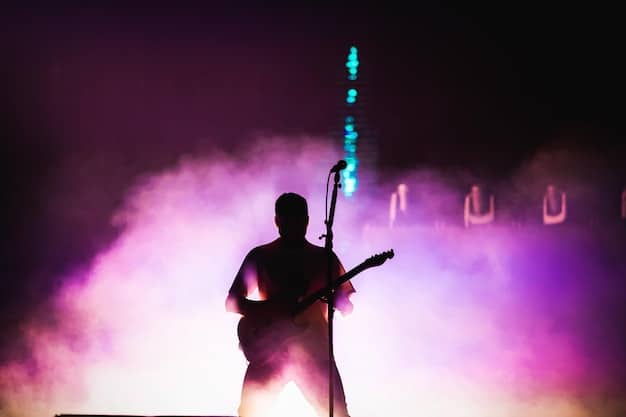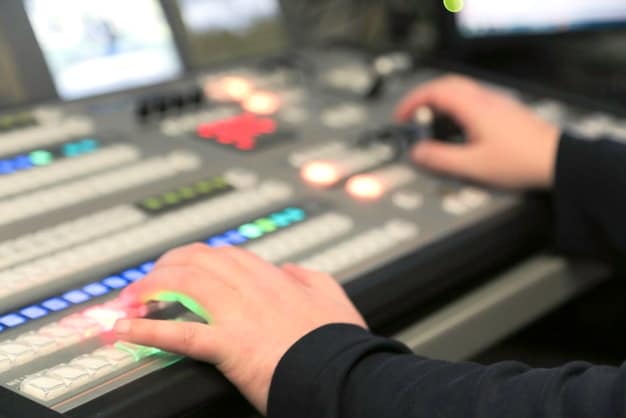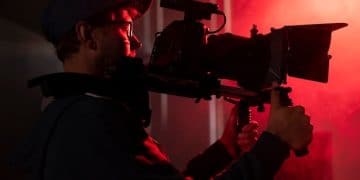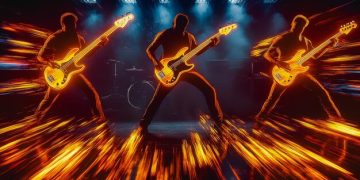Mastering the Stage: A Guide for Emerging Rock Artists

Emerging rock artists can captivate audiences by focusing on stage presence, musical precision, audience engagement, and technical proficiency, transforming each live performance into an unforgettable experience.
The journey of an emerging rock artist is filled with passion, creativity, and a burning desire to share their music with the world. While crafting compelling songs and honing your instrumental skills are crucial, mastering the art of the live performance is what truly sets a band apart. How can you transform your gigs from just another show into an unforgettable experience for your audience?
Rocking the Basics: Essential Gear and Setup
Before even thinking about your performance, it’s important to ensure that you have the right gear and setup to get the crowd jumpin’. Your sound can make or break a show, so putting some time into preparation can go a long way. Making sure your instruments work properly and that your sound is solid is key.
Instrument Essentials
The first thing you need to do is make sure that you have a working instrument. It may sound simple, but you wouldn’t believe how many musicians forget to test their setup before going on stage. You and your band should also have backups.
Sound System Setup
Setting up your sound system requires just as much preparation as your instruments. A good rule of thumb to follow is the bigger the venue, the more equipment you will need. If you are unsure, it’s always a good idea to ask the venue ahead of time if they have a professional audio engineer available to help.

- Choose the right equipment: Selecting high-quality amps, speakers, and microphones is the first step to achieving excellent sound.
- Set up early: Arrive at the venue with sufficient time to set up your gear and perform a thorough soundcheck.
- Know your levels: Pay close attention to the levels of each instrument and vocal to ensure a balanced and clear mix.
- Minimize feedback: Position speakers strategically to reduce the risk of feedback loops, which can be disruptive and painful for the audience.
Having the right gear and a solid setup is essential for a rock band to sound great. Well chosen instruments, along with clear sound, will give your show a boost of quality and keep the audience hooked.
Stage Presence: Commanding Attention
Stage presence is more than just standing on a stage; it’s about connecting with the audience through your charisma and energy. Projecting confidence and enthusiasm can electrify the crowd. Let’s get into some of the details.
Connect With the Crowd
Connecting with the audience is all about establishing the right body language. This means looking the crowd in the eyes, moving with conviction, and having a unique persona. When you’re at ease, the audience will be, too.
Engage Your Fans
When you think about legendary rock and roll performances, you probably think about the way they engaged their fans. These can be as simple as call and response or more complicated with coordinated light shows. Finding your own way to engage with fans will have them coming back for more.
A captivating stage presence is about more than just showing up, it is about putting on a show that will have people talking about you for weeks. Engage with the crowd and move with confidence and your audience will remember you.
Perfecting Your Setlist: Flow and Dynamics
Crafting the perfect setlist is an art form that involves balancing energy, pacing, and familiarity. It’s more than just playing a list of songs, it’s about giving your audience a dynamic show that will have them asking for more. Let’s explore what makes a great setlist.

Build Excitement
Starting strong with a high-energy song immediately grabs the audience’s attention and sets the tone for the rest of the performance. From there, you can play some more popular numbers. Saving your biggest hit until the end is another viable strategy.
Use Dynamics Effectively
Dynamics refers to the changes in tempo or song structure that can give the audience a sense of catharsis. A proper rise and fall can provide an emotional and satisfying experience.
- Energy Balance: Mix high-energy anthems with slower, more introspective pieces to maintain audience engagement without fatigue.
- Strategic Placement: Place your most popular songs at key moments, like the beginning and end, to maximize impact.
- Adaptability: Be prepared to adjust your setlist on the fly based on the crowd’s reaction and energy.
Perfecting your setlist is a never ending task. Every venue and audience is different and you need to be ready to embrace these changes and adjust your dynamics and energy accordingly. When the band is relaxed with their set list, the audience will follow suit and have a great time.
Musical Precision: Tightening Up Your Act
Musical precision is the bedrock of a great live performance. It involves fine-tuning every note and transition to present a polished show. While playing with passion can be exciting, sounding excellent is necessary for a good show.
Practice Makes Perfect
Consistent rehearsals that focus on tightening up transitions and harmonies can lead to a cleaner, more professional sound. Use these rehearsals to also experiment and challenge each other to get better and better.
Listen to Feedback
Seek feedback from trusted sources, such as fellow musicians or sound engineers, to identify areas for improvement. These are the people who are in the know and will be able to help your music get to the next level.
- Regular Rehearsals: Schedule regular rehearsals to ensure everyone is in sync and familiar with the material.
- Recording and Review: Record your rehearsals and performances to identify areas that need improvement.
- Professional Guidance: Work with a vocal or instrumental coach to refine your technique and performance skills.
Musical precision is essential for a rock band hoping to make it big. Regular practice along with helpful feedback is a formula for success with your original tracks or old favorites that you like to cover.
Technical Proficiency: Mastering Your Instruments
Technical proficiency is about having complete control over your instrument, from the simplest chord to the most complex riff. It’s about pushing your skills to the limit and beyond. When you can master the technical aspects, you are free to put on an even better show.
Know Your Instrument
Spend time understanding the nuances of your instrument. Each has its own quirks and personality that need to be learned. The more you know, the better you will be able to play.
Experiment With Sound
Playing rock instruments isn’t just about scales and chords, it’s about sound and effect. Work on adding unique dimensions to the music that will help you stand out.
Technical proficiency involves a musicians complete relationship of their instrument. When mastered, it is easier to express creative and technical ideas. So, get in the garage and practice and you will start to be more familiar with your instrument.
The Unexpected: Handling Mishaps Gracefully
Even with meticulous preparation, unforeseen issues can arise during a live performance. Knowing how to handle these moments gives your fans a sense of excitement and danger. Let’s have a look at common mistakes that you should prepare for.
Embrace What You Can’t Control
Remember that some things are simply beyond your control, such as technical difficulties. This is unavoidable in some instances, so you must learn not to dwell on it. Instead, focus on what you can control and keep calm.
Communicate With Your Band
Effective communication within the band can help navigate unexpected issues seamlessly. Make sure that you’re all on the same page and that it is easy to talk to each other. Don’t be afraid to poke fun at simple mistakes.
- Quick Thinking: Develop the ability to think on your feet and find creative solutions to unexpected problems.
- Improvisation Skills: Hone your improvisation skills to fill in gaps and keep the performance alive during technical difficulties.
- Positive Attitude: Maintain a positive attitude, even when things go wrong, to keep the audience engaged and entertained.
Embracing the unexpected is a lot more achievable if you do it with good spirits. The only way to make mistakes is to play, so the more you play, the better you will become at improvising and having fun. When fans see you laugh at a mistake, they’re more likely to connect with you.
| Key Element 🎸 | Brief Description |
|---|---|
| 🎤 Stage Presence | Engage the audience with confidence and charisma. |
| 🎶 Setlist Flow | Create a dynamic setlist with a mix of high-energy and slower songs. |
| 🔧 Technical Proficiency | Master your instruments and equipment for a polished performance. |
| 💡 Handling Mishaps | Embrace unexpected issues with grace and humor. |
FAQ
Stage presence is essential. It’s how you connect with your audience beyond the music. Energy, confidence, and charisma can transform a good performance into a memorable experience.
A great setlist balances high-energy anthems with slower pieces. Put your most popular songs at the beginning and end. Don’t be afraid to change it up based on the crowd’s vibe.
Regular rehearsals are vital for tightening up your act. The more confident you are about your music, the more fun you will have when you put on a show.
Purchasing gear will always depend on how serious the band is. Solid instruments are always a great place to start, along with reliable sound equipment. Don’t be afraid to get some vintage instruments.
Embrace mishaps with humor and quick thinking. Communicate with your band and keep a positive attitude. Turning a mistake into a funny moment can strengthen the connection with your audience.
Conclusion
Taking the stage as an emerging rock artist is an exciting, if not daunting experience, however, mastering the art of the live performance is crucial if you want the crowd to come back for more. By focusing on everything we’ve discussed, you will be well on your way to rocking the house.





